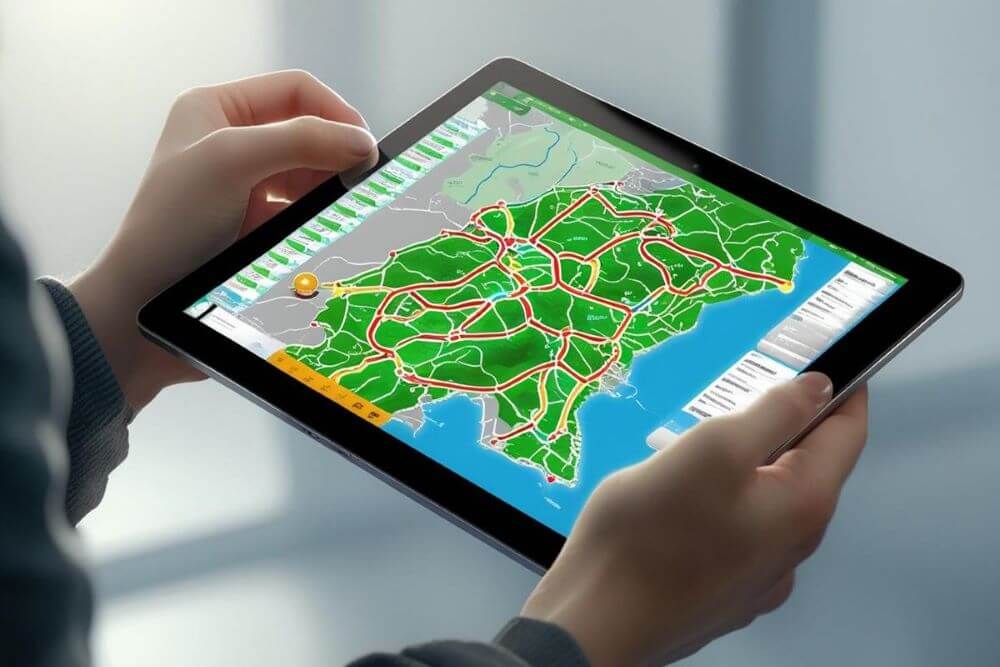For any business or courier company that manages deliveries, service calls, or fleet operations, time and efficiency are crucial. The faster and smarter you plan your routes, the more efficient your service is, without stress or blowing your budget on fuel.
However, this is where the debate starts: “Is route optimisation using advanced software, or basic manual planning, the best option?” You might have been in both situations, scribbling notes on a notepad, or dragging and dropping locations on a map app, and the next you are looking at a fast software tool that does everything faster; however, the question often beckons which method saves time, and offers more cost-effective solutions.
To make it easier for you, we will break down both methods so that you can make the best decision for your business delivery operations.
What Is Route Optimisation?
Route optimisation at its core is a process of finding the most efficient and fastest routes for your delivery drivers to use when delivering packages. Unlike simple mapping tools, advanced route optimisation software does much more than give you the shortest routes.
It provides you with data based on the following factors:
- Traffic patterns and congestion
- Delivery time windows
- Driver schedules and shift limits
- Vehicle load capacities
- Fuel efficiency
- Road restrictions (like weight limits or tolls)
So instead of just plotting down plans or using manual maps, route optimisation software offers a smart, data-driven plan that adapts in real time to give your drivers the best possible routes.
Manual Route Planning
Manual route planning involves making a list of destinations and deciding the delivery order yourself. You could use pen and paper, spreadsheets, or a basic online map. This method allows you full control of your decisions using your knowledge of local roads and drivers.
There are no software costs involved for advanced systems, and if you are familiar with your process, it feels like second nature. However, this process is time-consuming and leaves much room for error. Your plans are often not scalable, making it hard to plan for a fleet of drivers. Also, because there are no real-time instant updates, you must make decisions fast or start from scratch.
Route Optimisation Software
With route optimisation software, you feed in all your delivery addresses, set your priorities, and let the system crunch the numbers. Route optimisation saves you hours of planning by calculating the routes in seconds. It also adapts to changes instantly and provides real-time updates, keeping drivers on track. Similarly, with the software, you can provide customers with more accurate estimated arrival times, creating customer satisfaction.
Furthermore, route optimisation tools help cut costs by using less fuel and idling time, and because of data-driven insights, you can review your performance and improve future planning.
However, route optimization software does require initial software or subscription costs and has a learning curve. You may have to teach your team to use the software and adapt to it. Another complication that could arise is when the system goes down, in which case you will need a quick backup plan.
Which Option Saves More Time?
With regard to deliveries, time is of the essence. If you are manually planning a multi-stop route, you need some time to figure out the order, adjust to traffic, and double check address. Now multiply that by three or more drivers in your fleet, and you may lose half a day’s work before the first vehicle even starts moving.
On the other hand, route optimisation software takes less than five minutes to plan, and the system handles all the calculations and data to give you the best routes, while sending it straight to your driver’s devices.
Thus, you are saving on time planning and saving driving time. Did you know that a well-optimised route can easily cut your drivers’ travel time by 10 % – 20% each day? Over a month, that becomes hours of productivity that you gain, without additional vehicles or staff.
Which Is Right for You?
For smaller businesses with a single driver and a handful of stops a day, manual planning should work fine, taking into account that you know your area.
However, for a growing business or larger businesses, deliveries can become more complex. Drivers may spend too much time on the road, and planning takes up too much time. In this case, route optimisation software is the smarter choice to save you time, reduce costs, and streamline operations.
The Bottom Line
Manual planning gives you control, but it’s slow, prone to error, and hard to scale. Route optimisation software is faster, more accurate, and built for modern logistics. In a world where customers expect fast and efficient deliveries with real-time updates, route optimisation makes a huge difference.
When it comes to saving time, the answer is clear: route optimization tools do all the heavy lifting faster and more efficiently than manual planning. This allows you to focus your energy on growing your business and meeting customer demands.






